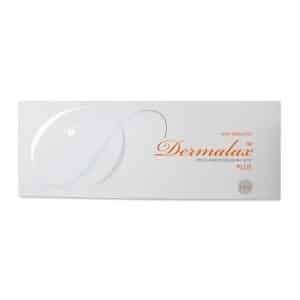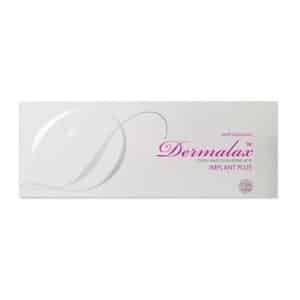Hyaluronic acid dermal fillers have become a cornerstone in cosmetic procedures, with global demand rapidly increasing. In 2021, the global dermal filler market was valued at over $5 billion and is projected to grow at a compound annual growth rate of 9.3% through 2030. These fillers offer a minimally invasive approach to facial rejuvenation and contouring, enhancing appearance with natural-looking results.
Dermalax and Juvederm are two leading hyaluronic acid fillers, each offering distinct benefits. Dermalax is praised for its smooth consistency and affordability, making it an accessible choice for many, while Juvederm is known for its long-lasting effects and premium quality. Understanding the differences between these fillers is essential for selecting the right option based on individual needs and goals.
In this article, we will compare Dermalax and Juvederm, focusing on their formulation, longevity, and safety to help you make an informed choice.
Key Takeaways
- Both Dermalax and Juvederm are made of hyaluronic acid. This makes the skin look younger. They come in different types for various needs.
- Juvederm lasts up to two years, while Dermalax’s effects last about a year. Your choice depends on your needs and budget.
- Both fillers are familiar with minor side effects, like swelling or bruising. Serious problems are rare. Always talk to a doctor first.
- Dermalax is cheaper and suitable for deep wrinkles. Meanwhile, Juvederm offers more options for different face areas, like lips and cheeks.
- Patient happiness is high with both brands. Most people see better looks within two weeks after treatment.
About: Medical Spa RX provides medical practices with premium products at the best prices. If you’re looking to order Dermalax online for your practice, the sales representatives at Medical Spa RX can give you guidance.
Introduction to Dermalax and Juvederm
Dermalax is a popular hyaluronic acid-based dermal filler brand manufactured by Across, a South Korean company known for its focus on quality and innovative cosmetic solutions. Designed to address a range of aesthetic concerns, Dermalax fillers effectively treat deep wrinkles, volume loss, and facial contouring.
A standout feature of Dermalax is its use of monophasic and cross-linked hyaluronic acid, which provides smooth, natural-looking, and long-lasting results.
Juvederm is one of the most recognized brands in the dermal filler market. It offers a wide range of products tailored to various facial areas and cosmetic needs. Juvederm fillers utilize hyaluronic acid to restore facial volume, smooth wrinkles, and enhance contours, making it a trusted choice among patients and practitioners alike.
Formulation and Composition

- Dermalax: These fillers are crafted using high-quality, cross-linked monophasic hyaluronic acid, meaning the gel is uniform in texture and density. This formulation allows for smooth and even application, providing natural-looking results with minimal discomfort. The cross-linking technology used in Dermalax enhances the filler’s stability, ensuring longer-lasting effects.
- Juvederm: These fillers utilize Vycross or Hylacross technology, which combines low and high molecular weight hyaluronic acid to create a smoother, more cohesive gel. This advanced formulation improves the filler’s ability to integrate seamlessly with the skin, enhancing volume and providing more durable results. Juvederm’s cross-linked hyaluronic acid also contributes to its elasticity and natural feel, making it ideal for various cosmetic enhancements.
Variations and Formulations Available
Both Dermalax and Juvederm offer a variety of formulations tailored to different cosmetic needs:
- Dermalax: The Dermalax line includes fillers such as Dermalax Deep Plus for deep wrinkle correction, Dermalax Plus for moderate wrinkle filling, and Dermalax lip filler for lip augmentation and contouring. Each formulation is designed to cater to specific areas, providing flexibility in treatment options.
- Juvederm: The Juvederm family boasts several specialized products, including Juvederm Voluma for cheek and mid-face volumization, Juvederm Ultra for lip enhancement, and Juvederm Volbella for fine lines and subtle lip plumping. Each formulation varies in thickness and elasticity, allowing for customized treatments based on individual patient needs.
Texture and Consistency

Dermalax stands out with its smooth and cohesive texture, achieved through a combination of monophasic and cross-linked hyaluronic acid. This formulation creates a uniform consistency that integrates gradually into the skin, offering natural-looking results that improve over time. Dermalax’s texture is especially effective for addressing deeper wrinkles and restoring facial volume, providing a balanced and subtle enhancement.
Juvederm also utilizes hyaluronic acid but through a unique formulation process. Known for their smooth, gel-like consistency, Juvederm products deliver immediate and natural-looking outcomes. The texture of Juvederm varies slightly across its range, with some formulations designed to be more cohesive for structural support. In contrast, others are more fluid, allowing for subtle adjustments based on the treatment area and desired results.
How the Texture Affects Injection and Spreadability
The texture and consistency of dermal fillers play a crucial role in their injection and spreadability.
- Dermalax’s smooth texture allows for easy injection and even distribution, making it ideal for contouring and volumizing with stable, long-lasting results.
- Juvederm’s gel-like consistency offers excellent spreadability and precise application, delivering immediate results. Its varying textures within the product range allow tailored treatments for fine lines, deep wrinkles, and volume restoration.
Duration of Results
Dermalax fillers typically last 6 to 12 months, depending on the specific product used and the treatment area. However, since Juvederm fillers are generally longer-lasting, their results range from 9 to 18 months, thanks to advanced cross-linking technologies like Vycross.
Products like Juvederm Voluma can maintain results for up to 2 years when used for cheek enhancement, while others like Juvederm Ultra may last around nine months, especially in areas with more movement.
Factors Affecting Duration
- Metabolism: Higher metabolic rates can break down hyaluronic acid faster, reducing the filler’s longevity.
- Treatment Area: Areas with frequent movement, like the lips, may see quicker degradation of the filler.
- Product Composition: Each filler’s density and cross-linking technology influence how long the results will last.
- Lifestyle Factors: Smoking, sun exposure, and high levels of physical activity can shorten the effects of both Dermalax and Juvederm fillers.
Ideal Treatment Areas
Dermalax fillers are versatile and can be used in various facial areas to address different aesthetic concerns. Common treatment areas include:
- Lips: Enhancing volume and shape.
- Nasolabial Folds: Reducing the appearance of deep lines running from the nose to the mouth.
- Cheeks: Restoring volume and contour.
- Forehead: Smoothing out fine lines and wrinkles.
- Chin and Jawline: Enhancing definition and contour.
Similarly, Juvederm offers a range of products tailored to specific facial areas, making it a popular choice for various treatments:
- Lips: Juvederm Ultra and Volbella are commonly used for lip augmentation and fine-line smoothing.
- Cheeks: Juvede rm Voluma is ideal for mid-face volume restoration.
- Nasolabial Folds: Juvederm Vollure and Ultra are effective for reducing deep lines.
- Under-Eye Area: Juvederm Volbella can address tear troughs and hollows.
- Chin and Jawline: Juvederm Volux is designed to enhance the definition of chin and jawline.
Specific Considerations for Choosing the Right Filler
When selecting the appropriate filler, several factors should be considered:
- Soft, Natural Enhancements: For subtle volume in the lips or fine lines, Dermalax is often preferred.
- Long-Lasting Volumization: For areas like the cheeks or chin, Juvederm’s advanced formulations, such as Voluma, provide extended results and better structural support.
- Movement-Prone Areas: Juvederm’s elasticity and cohesive gel are ideal for high-movement areas, like around the mouth, offering durability and a smooth finish.
Performance in Various Applications
Dermalax uses MSC technology to work well on different parts of the face. This technology helps make treatments smooth and last long. For cheeks, Dermalax can fill in recessed areas, making them look fuller.
Patients see natural results that improve over weeks with few risks of problems. Each product in the Dermalax range is made for specific facial areas. So doctors can choose the right one for each part of the face that needs treatment.
Juvederm works well in many parts of the face. It has unique products for making lips fuller and adding volume to the middle of the face. Juvederm Voluma XC can even fix hollow temples, as per FDA approval.
This filler uses Vycross and Hylacross technologies, which make it last longer and feel more natural. Juvederm can work for up to 18 months, depending on where you use it.
Patient Satisfaction and Complications

Patient satisfaction is a key factor when choosing between dermal fillers like Dermalax and Juvederm.
- Dermalax: These fillers have garnered positive feedback from patients, particularly for their natural-looking results and smooth integration into the skin. Many users appreciate the gradual and subtle enhancement, contributing to high satisfaction rates.
- Juvederm: Patients often report high satisfaction with these fillers due to their smooth, gel-like consistency which provides a natural appearance. The versatility of Juvederm’s product range allows for tailored treatments, further enhancing patient satisfaction.
Potential Complications and Side Effects
Dermalax and Juvederm are generally well-tolerated, but like all dermal fillers, they have potential risks and side effects. Here are some common complications associated with both fillers:
- Swelling and Bruising: Temporary swelling and bruising at the injection site are common and usually resolve within a few days.
- Redness and Tenderness: Some patients may experience redness and tenderness around the treated area.
- Lumps and Bumps: Occasionally, small lumps or bumps may form under the skin, which can be massaged out by the practitioner.
- Infection: Although rare, there is a risk of infection at the injection site.
- Allergic Reactions: Allergic reactions are uncommon but can occur, particularly in individuals with a history of allergies.
- Migration of Filler: In rare cases, the filler may migrate from the injection site, leading to uneven results.
When considering dermal fillers, it’s crucial to consult with a qualified healthcare provider to discuss potential risks and benefits. This is especially important when considering products like Dermalax, as patients often ask, “Is Dermalax FDA approved?” Currently, only Juvederm has received FDA approval in the United States.
Conclusion
Choosing between Dermalax and Juvederm depends on your specific cosmetic goals and needs. Both fillers use hyaluronic acid to rejuvenate the skin, but they serve different purposes: Dermalax is ideal for deep wrinkles and volume enhancement, while Juvederm offers a range of products tailored to various facial areas.
Consider your budget and treatment goals, and consult a professional to determine which filler will provide the best results for you.
FAQs
1. What are Dermalax and Juvederm?
Dermalax and Juvederm are hyaluronic acid-based dermal fillers that reduce wrinkles and add volume to the skin.
2. How do Dermalax and Juvederm compare?
Dermalax and Juvederm provide hyaluronic acid-based dermal fillers, but Juvederm is FDA-approved and offers a broader range of formulations for different aesthetic needs.
3. Are there any risks involved in using these dermal fillers?
Using dermal fillers like Dermalax and Juvederm can involve risks such as swelling, bruising, redness, lumps, infection, and in rare cases, allergic reactions or filler migration.
References
Grand View Research. (2022). Dermal fillers market size, share, & trends analysis report. https://www.grandviewresearch.com
Bogdan Allemann, I., & Baumann, L. (2008). Hyaluronic acid gel (Juvéderm) preparations in the treatment of facial wrinkles and folds. Clinical interventions in aging, 3(4), 629–634. https://doi.org/10.2147/cia.s3118























